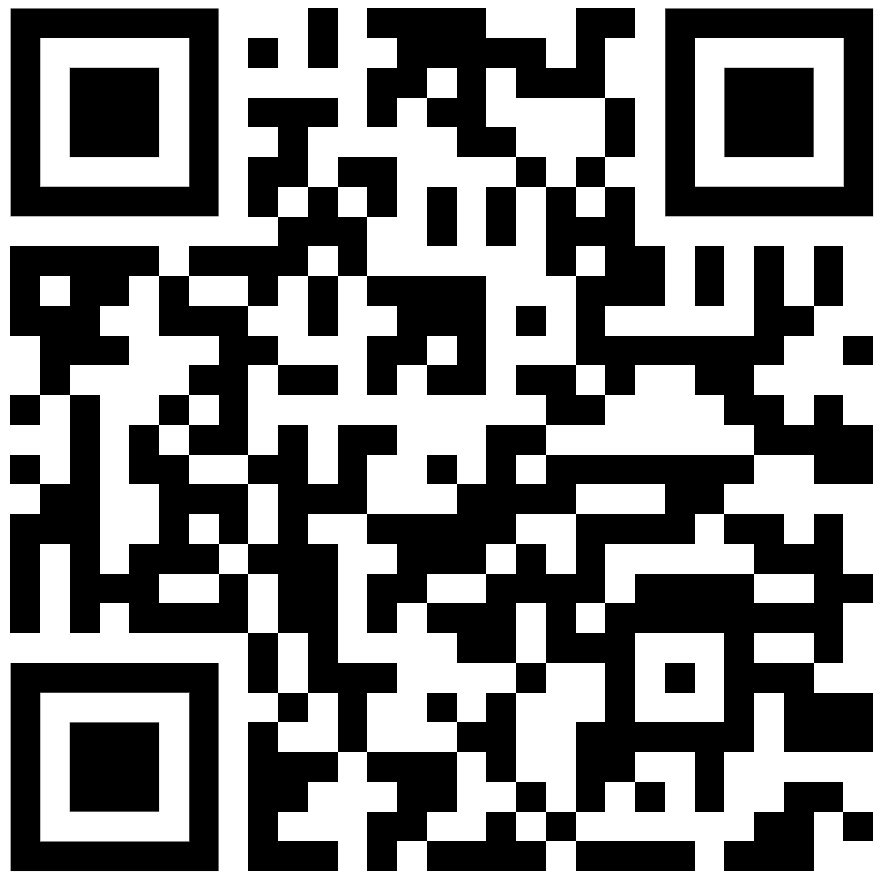Building a portfolio tracker
An app to track your assets and achieve your goals
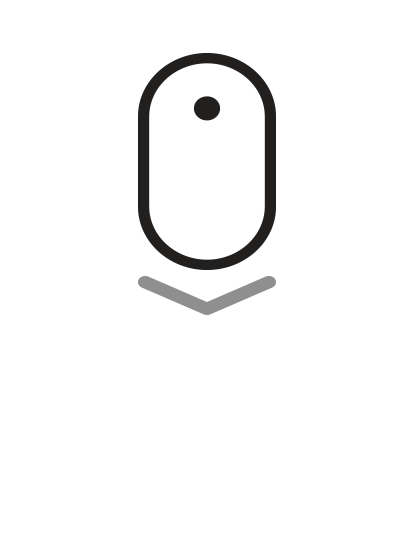
Project type
Personal Project
Role
Sole Product Designer
Tools
Figma, Notion, Photoshop
Duration
4 months
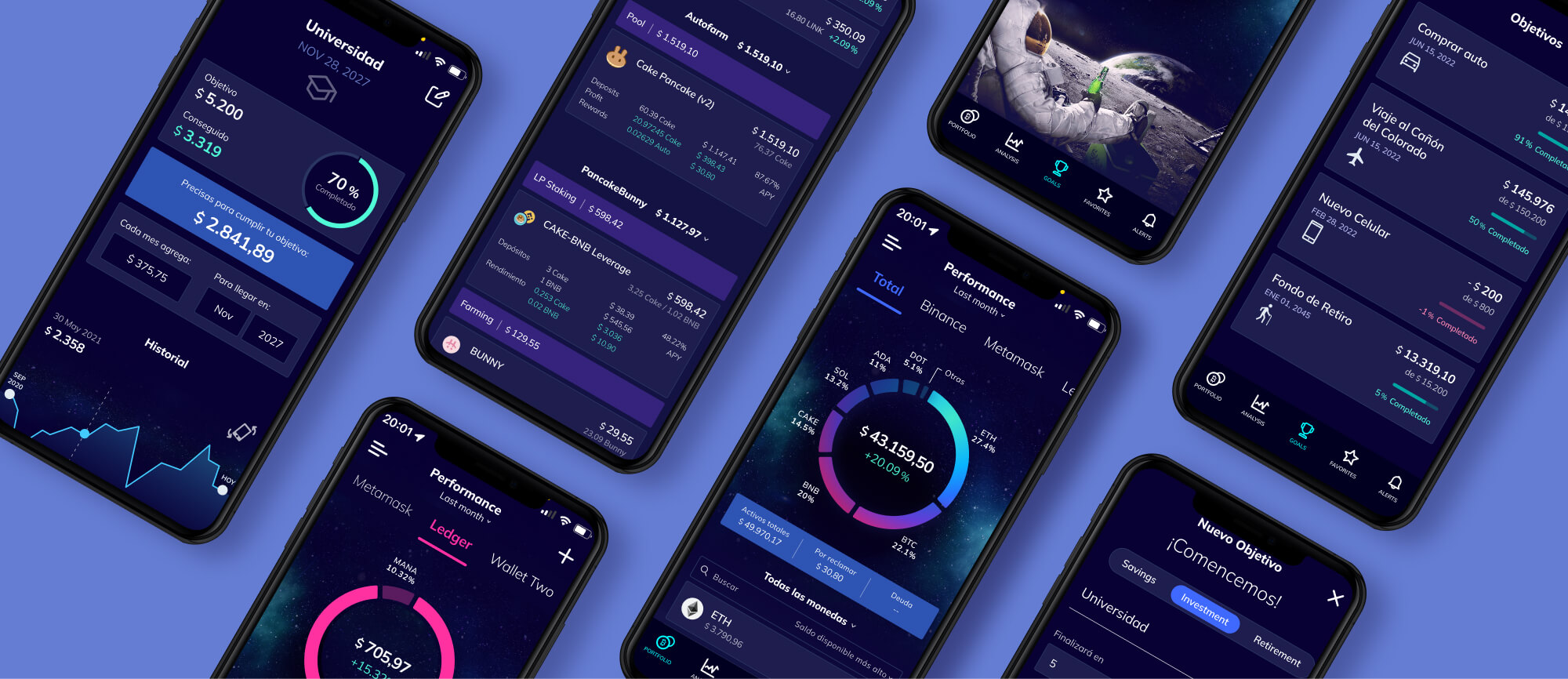
Project Overview
As a crypto investor, I struggled to track my assets across multiple wallets, platforms, and DeFi pools. Existing tools lacked a complete view, making it difficult to manage holdings and plan finances effectively. This led me to ask:
How might we help people view all their crypto assets in one place, accesible anytime, anywhere?
Beyond visibility, budgeting in crypto was nearly impossible. Managing different wallets and investments made it hard to track available funds and make informed financial decisions. Many users, including myself, lacked the tools and expertise to optimize their assets, increasing the risk of losing track of savings and missing opportunities.
How might we help them keep their savings organized, and take better buy/sell decisions to meet their goals?
Market Gaps & Opportunities
Why Crypto Users Needed a Better Tool?
Millions of people in Latin America use crypto to protect their savings from inflation and government restrictions. However, tracking assets across different platforms is a frustrating, fragmented experience.
I analyzed 24 existing apps and found that while some specialized in portfolio tracking and others in DeFi analytics, none combined both with personal finance features.
Pain Points (That Became Opportunities)
- While some apps split holdings by exchange, network, or wallet, none were able to give me a clear, nested breakdown of totals and profits.
- Most onboarding experiences were tedious, requiring manual entry of holdings.
- Some UI elements are very small, difficult to read for nearsighted users.
- Setting financial goals in crypto was complex and separated from tracking tools.
- Creating a goal requires many steps
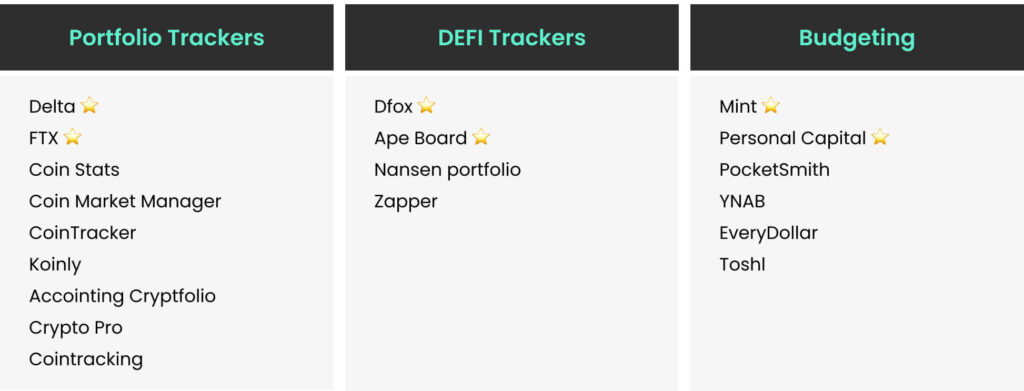
These insights shaped PocketMoon’s key differentiator:
Pocketmoon is a unified platform for tracking, budgeting, and setting financial goals in crypto
Understanding the users
I broadly divided cryptocurrency users into two groups:
- Early Adopters:
Tech-savvy, upper/upper-middle class, and mostly male.
Many entered the market before the 2020 boom, drawn by crypto’s anti-establishment ethos. - New Generation of Crypto Consumers:
More diverse in demographics, including young adults and middle/lower-income users.
Their main interest is financial stability and savings protection, rather than speculation.
Since this second group represents a growing market with different needs, I decided to focus on them and conducted a survey that guided the creation of two proto-personas representing different experience levels within this group:

🎒 Isa – The Newbie
Beginner-intermediate in crypto
Design Focus: Simplicity.
Behavior: Uses crypto for savings, checks finances at the end of the month, gets distracted easily.
Needs: A simple way to track holdings, set savings goals, and see gains/losses easily.
Super clear data on how much money she has, and how much she earned/lost per month.
Pain Points: Overwhelmed by too much info, struggles with financial planning, needs quick insights.

💻 Lucas – The Techie
Advanced-intermediate in crypto
Design Focus: Depth.
Behavior: Tracks investments daily, invests in multiple platforms, motivated by progress.
Needs: Detailed insights on portfolio performance, including DeFi earnings, portfolio projections and advanced analytics.
Pain Points: It’s complex to manage multiple platforms. It lacks an all-in-one tracking tool to view projections and make better decisions.
While mapping the user’ journey, I found some essential definitions for the product:
- A mobile-first app for instant access.
- Automated wallet & platform syncing to eliminate manual entry.
- Integrated savings & goal tracking, combining budgeting tools with investment projections.
- Ensure a user-friendly experience with adaptable complexity level.
From Concept to Product
Based on these insights, I defined PocketMoon’s product structure:
- Portfolio Overview: Clear breakdown of assets across wallets, exchanges & DeFi.
- Goal Setting: A streamlined process to create savings, investment & retirement goals.
- Performance Analysis: Insights on past trades and portfolio evolution.
- Favorites & Alerts: Follow coins & set price alerts.
User Testing & Iterations
I built a mid-fidelity prototype and conducted usability tests, learning on the way:
- Portfolio analytics lacked a time period selector, making performance evaluation confusing.
- I had designed the investment and retirement calculators as a complementary feature to goal creation, but it would be easier to integrate them so that users can play with the values when creating the goal.
- The initial idea of the «market» section was too broad, leading to a refined «favorites» feature instead.
These insights led to critical iterations, refining the user journey before high-fidelity design.

Final Solution
I started designing high fidelity prototypes by creating stylescapes and a style guide for the user interface and determining major screens of the app. I used Figma for UI design and prototypes.
The visual design was inspired by space, appealing to the crypto phrase of increasing its value «to the moon».
The choice for the colors palette is shiny and fresh. I wanted to explore the neon spectrum and find a good contrast between the bright and dark extremes, as well of the usage of the gradient that reflects the ever changing nature of the business.

Portfolio & Goals
Portfolio overview
Users can:
- See total holdings, profits, and losses at a glance.
- Swipe to view breakdowns by exchange, wallet, and DeFi earnings.
- Tap any asset for detailed insights and trade analysis.
- Track some favorite coins and set alerts for price markets and goals achievement.

Goal Setting & Tracking
After conducting usability testing, I realized that my initial approach had limitations:
INITIAL ISSUE
❌ Calculators were separate from goal creation, forcing users to manually transfer only the final amount while losing all other valuable insights generated during the calculation process.
❌ All goals followed the same rigid structure.
❌ A multi-step form with a progress bar felt excessive for a two-step process.
ITERATION
✅ Integrated calculators into the goal-setting flow so users could adjust values dynamically (play with final date, amount, contribution, etc) without losing information.
✅ Goals were categorized into Savings, Investment, and Retirement, each with tailored inputs.
✅ Simplified the UI by removing unnecessary steps and optimizing wording for clarity.
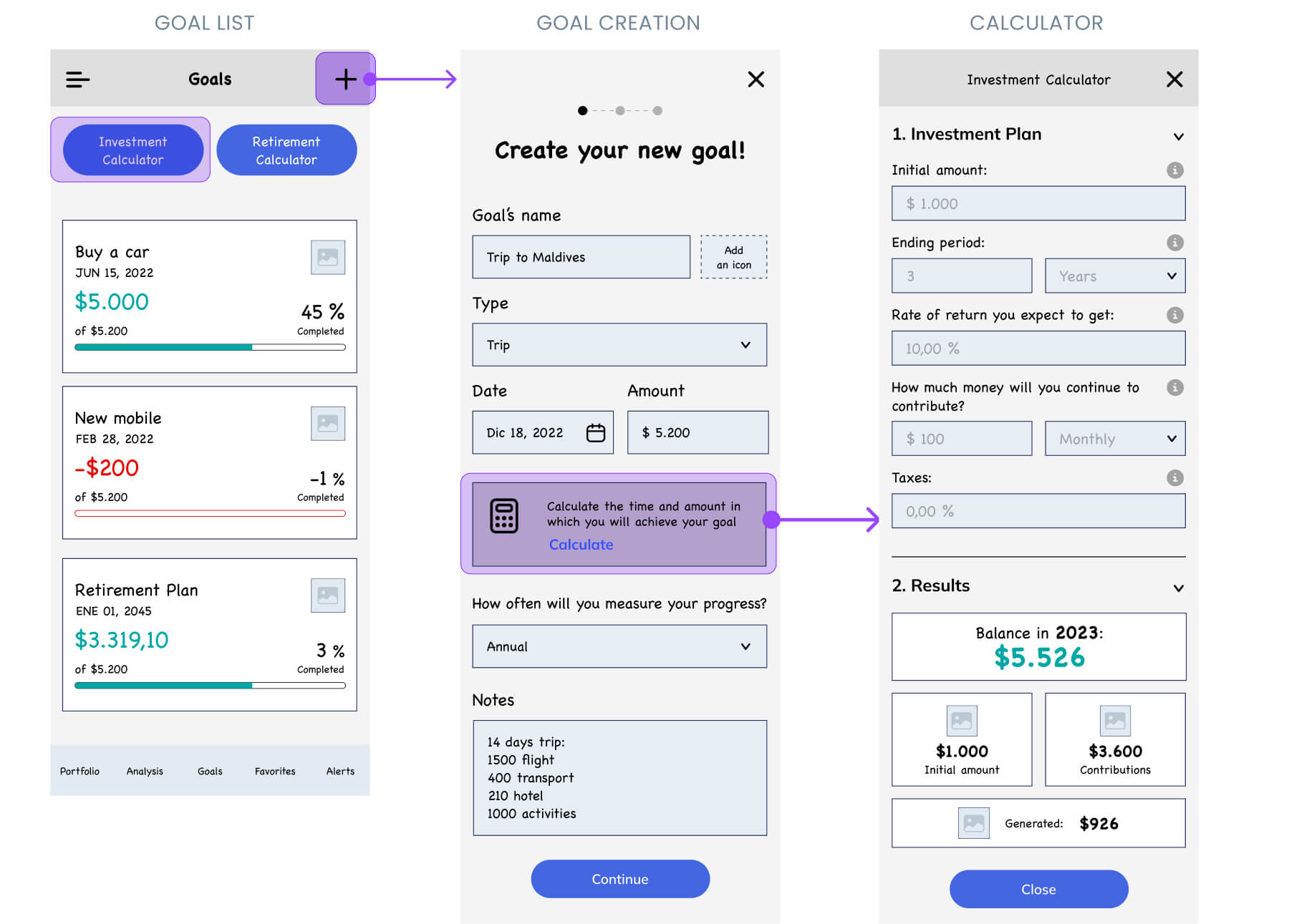
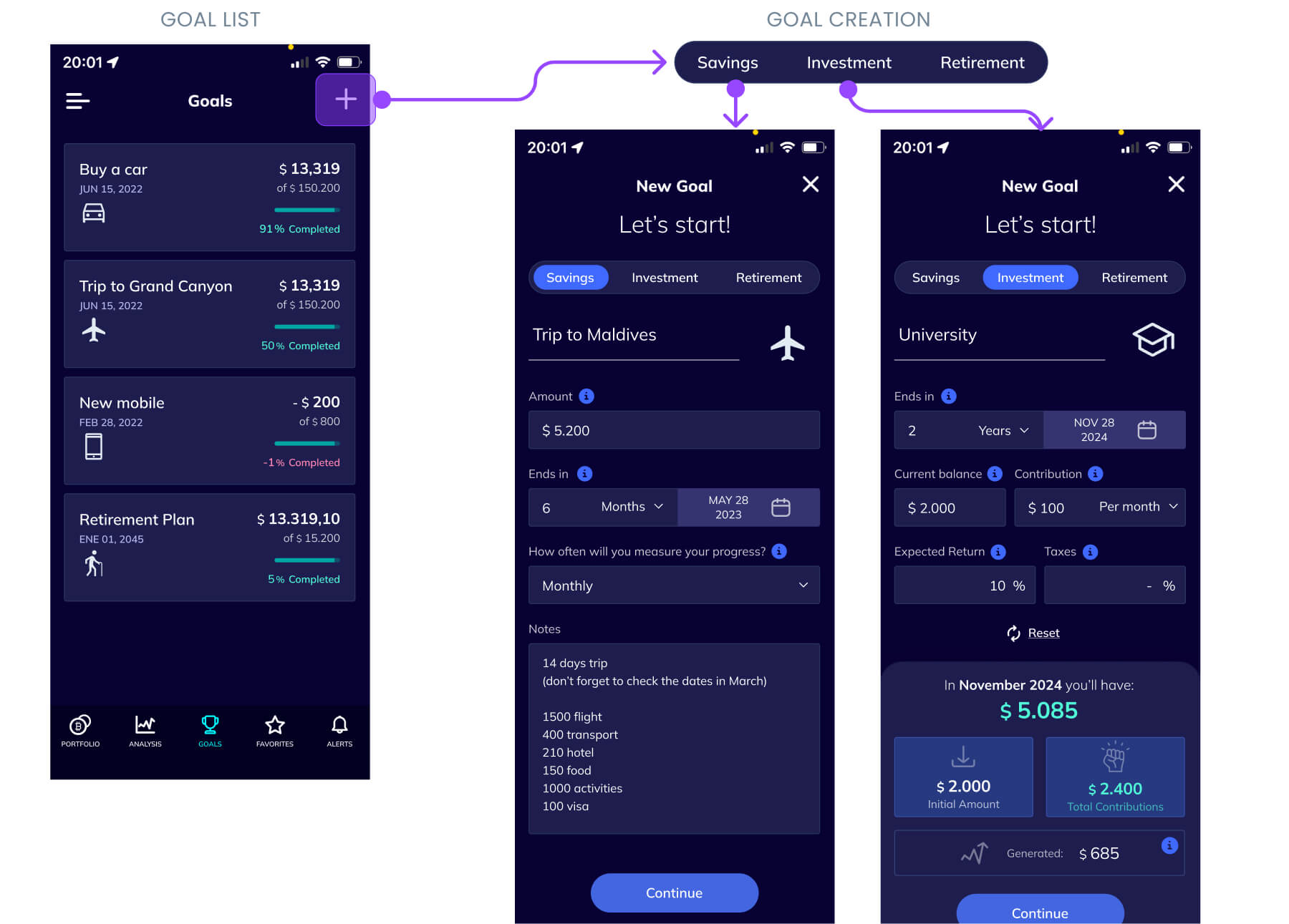
Defining Metrics for Success
To measure PocketMoon’s impact post-launch, I established key UX metrics:
Challenges
Technical Feasibility
- Ensuring seamless integration with all platforms, wallets, and especially DeFi protocols.
- Developing a reliable system to analyze good vs. bad trades within the platform.
Product Challenges & User Behavior:
- How to motivate users to create and maintain their goals?
- How to handle goal fluctuations due to crypto volatility, particularly in bear markets?
- What happens when a user assigns funds to a goal, but later sells those assets?
Next Steps
Design Enhancements
- Design wallet and account connection setup flows for a seamless onboarding experience.
- Increase color contrast ratio for main blue color.
- Develop screens for trade performance analysis and portfolio projections over time.
- Design and define custom alerts to notify users of price changes, market trends, and goal progress.
Feature Expansion
- Explore and design better solutions to link goals with portfolio funds.
- Introduce user incentives, such as rewards, points, or discounts, to encourage goal completion.
By addressing these next steps, PocketMoon can evolve into a more comprehensive and dynamic financial tool, bridging the gap between crypto tracking and smart financial planning.
👇
Short in time? I get it.
But if you’d like to explore the final prototype or dive into the thinking behind this project, you can check out the full process-detailed version below.

